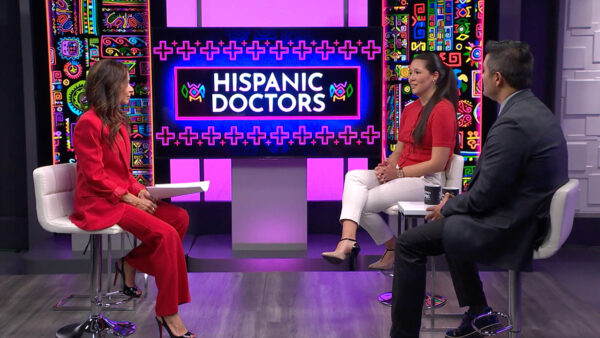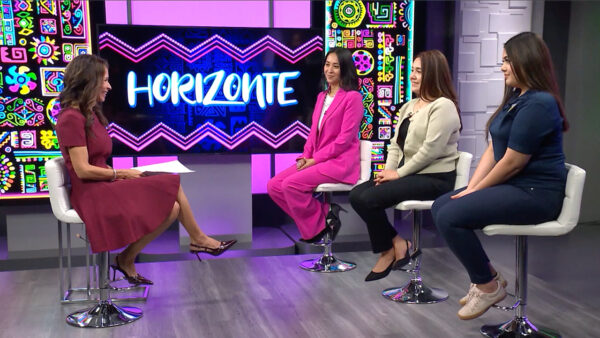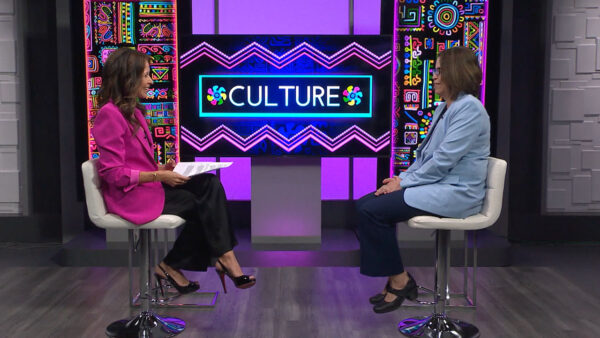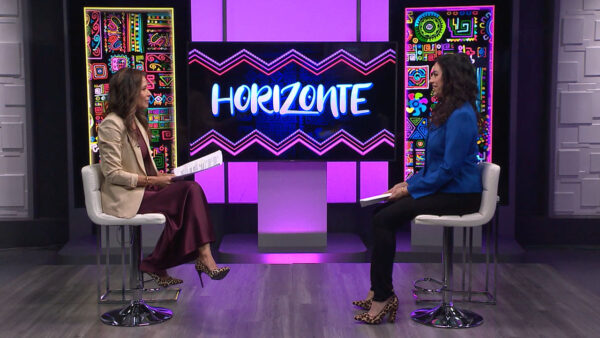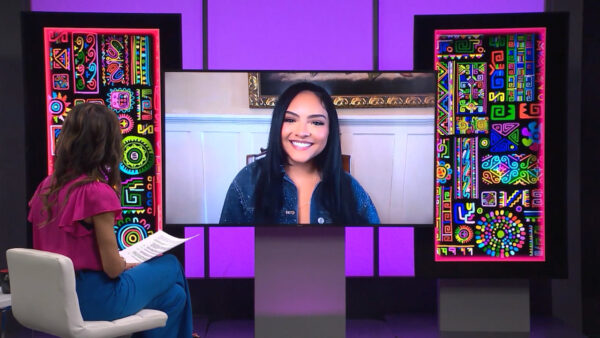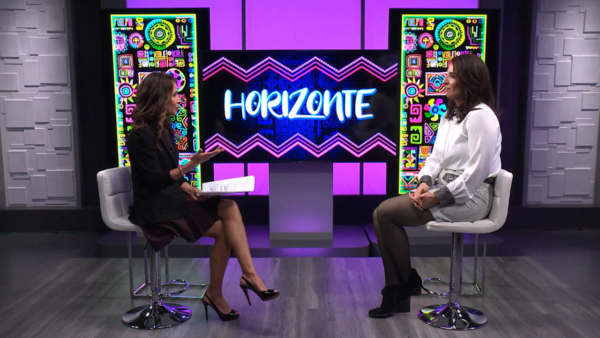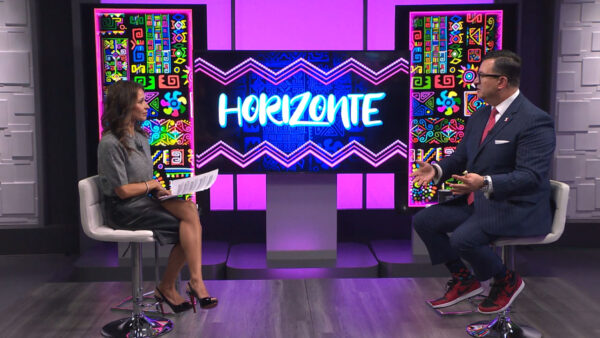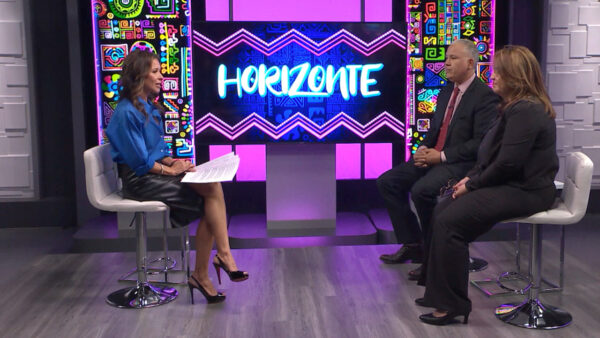The Florence Project provides free legal services to women, men, and unaccompanied children detained in Arizona for immigration removal proceedings. Noel Fidel, Florence Project’s Board president, and Lindsay Marshall, executive director, talk about the organization.
Jose Cardenas: The Florence Immigrant and Refugee Rights Project is an organization dedicated to providing assistance with legal issues faced by detained immigrants. The project celebrated its 20th anniversary last year. Joining me to talk about the Florence Immigrant and Refugee Rights Project is Noel Fidel, board president and former superior court judge. And Lindsay Marshall, executive director for the project. Thank you both for joining us on "Horizonte." Lindsay, let's give a little background about the project.
Lindsay Marshall: OK. The Florence project was founded in 1989, we've been in practice for a little bit more than 20 years now. What we do is we're a nonprofit legal Services organization. We provide free legal assistance to immigrants that are going through deportation court proceedings and while they're going through those proceedings they are detained in facilities adults are detained in Florence and Eloy, about an hour, hour 20 minutes south of Phoenix, and children are held in shelters in the Phoenix area. So these people are going through immigration court proceedings and what the project does is provide them information about their rights and provide legal counsel or referral to volunteers in the community.
Jose Cardenas: How many developed utilizing detainees are we talking about?
Lindsay Marshall: About 3,000 men, women, and unaccompanied children that are detained at any given time. People are moving through the system on a pretty rapid basis. In 2010 we served about 8,000 people. It's a pretty high volume of people.
Jose Cardenas: And who is the we? What kind of staffing do you have?
Lindsay Marshall: Right now we have a staff of about 17 people. 11 of us are attorneys, then we have legal assistants as well. But it's a pretty small staff with a high volume. When the Florence Project started in 1989, it was just one attorney and one paralegal working with a population of about 500 people in detention. So as enforcement has grown and detention has grown in Arizona and nationally the project has expanded to meet that need. We're definitely looking at a high volume of clients served with a small staff.
Jose Cardenas: What was the need that led to the creation of the project 21 years ago?
Noel Fidel: The need was there is no public defender system, there's no right to state-provided counsel for immigrants in detention. And a lot of the people who are detained have claims to asylum status, refugee status, or may even have citizenship papers or documents that entitle them to be here. But in the confusion of detention, they need to consult with lawyers; they need some explanation of what their rights are. They're also a lot of people who have no right to be here, but who don't understand the system, and the immigration court judges felt that some sort of presentation, some sort of screening would be helpful so that those who really have no claim to remaining could be returned to their country expeditiously understanding what their position was. And that the others after going through screening, could be either informed of their rights to represent themselves, or provided with counsel.
Jose Cardenas: So can you describe the typical experience that detainee would have in terms of the interaction with the staff at the Florence project?
Noel Fidel: Well, we do know your rights presentations for everyone, we have --
Jose Cardenas: is that as a group?
Noel Fidel: Yes. And we do individualized screening with detainees, and then there are varieties of levels of Services for people depending on what their needs are and what their claim may be. Everything from helping them with briefing and documentary preparation, to finding them pro bono counsel, or finding them -- representing them with members of our own staff.
Jose Cardenas: Lindsay, the judge described the process for people who are already there, let's go backwards in time and talk about how the process begins with detainment by ice.
Lindsay Marshall: Some of it is a little mystery for us, because we're encountering people after they're already in custody and going before court. But what we hear in talking to people is that we work with kind of - a break the population in two sectors. One, people who have recently crossed the border and have been apprehended by border patrol or ICE and are put into removal proceedings, Florence is the epicenter in Arizona of where people are going to be brought to be brought into detention. They might get transferred to another facility, but they're going to be going through that process initially in Florence. Other people might have lived here for a very long time, they might be what are called lawful permanent residents, green card holders, but they're in proceedings because of criminal offence or because of some sort of arrest that has put them into deportation proceedings. So some people are coming into the system as new arrivals to the U.S. that have crossed into Arizona, and others have lived here for quite a long time and are coming out of the criminal process or might be complying with probation or picked up for some other kind of offense. So they all will kind of go through Florence, and then will be given what's called a master calendar hearing, their first appearance before an immigration judge. The Florence project will see them right before that first appearance with the judge and that's when we do our triage, know your rights presentation with people in Spanish as a group, and then we help people one-on-one kind after that large group presentation.
Jose Cardenas: You mentioned in Spanish, but some of the people who are detained are not from Spanish-speaking countries.
Lindsay Marshall: That's right. Last year I believe we served people from over 90 different countries. One of the big misconceptions is that everybody that is detained here going through proceedings are native Spanish speakers or even people from Mexico, but people are from all over the world, Central America. So the primary people are Spanish speakers, so we do our presentations in Spanish, but we do separate presentations in English. We often identify people who don't speak either language, we rely on the help of volunteers, and often times have some self-help materials in other languages to try to inform people of their rights. We'll do as much -- as well as we can in the beginning and bring in a volunteer to help us have a more thorough intake if we need to in another language.
Jose Cardenas: I want to talk to you both about the children who are involved in these proceedings, and specifically judge, just a description of the facilities a separate facilities for the kids?
Noel Fidel: A separate facility for the kids, it's under the auspices of the office of refugee resettlement. And they have educational programs, and recreational programs, and so these unaccompanied kids can be as -- we've seen kids as young as 5 who are housed there. I have a client myself who received her first education in her life there when she was in detention. First reading and writing lessons when she was age 17, she came from Guatemala. So have you people of all ages who are housed in -- they're confined, but the conditions are humane.
Jose Cardenas: Lindsay, let's talk about these kids. How do they get into the system? In situations where they haven't committed a crime or they haven't been picked up by ICE specifically in terms of their own immigration status.
Lindsay Marshall: Yeah, the kids when I was talking about the two different groups, most, nearly all of the children we're working with are kids that have recently crossed the border and they're called the legal term of art unaccompanied immigrant children. They're children that have crossed the border without a parent or guardian, and they're under 18 years old. Most of the kids we're seeing have been apprehended, in the Arizona desert or after their journey.
Jose Cardenas: You said without a parent or guardian. If their parents accompanied them on the trip would they be treated differently?
Lindsay Marshall: Often times we'll see children that have somehow tried to cross with a parent or relative and they've gotten separated. It comes down to whether when they first -- when they're apprehended if they're with somebody or not. Kids that have crossed with parents they usually remain with parents.
Jose Cardenas: And physically where would they be housed?
Lindsay Marshall: Physically they might temporarily be housed in Florence, it's really unknown how many might be housed in that way, but usually we've been told they would be released as a family unit.
Jose Cardenas: The facility the judge was describing is one for unaccompanied --
Lindsay Marshall: all of the children are unaccompanied.
Jose Cardenas: Typically how young?
Lindsay Marshall: On average they're usually between 15 and 17, but we routinely see kids as young as 5, 9 or 10 years old. So quite common.
Jose Cardenas: If you have somebody whose parents have been apprehended by ICE, people have been living here for a number of years, what happens to those kids? Would they end up in this facility?
Lindsay Marshall: Actually they usually wouldn't. These facilities in the system that's under the resettlement is designed for kids that have come here, ridden the trains through Central America, migrant children. Kids that -- whose parents are picked up and going through the adult system, often times when we talk to parents they're staying with relatives, but they're usually -- they can be in precarious living situations. They might end up in the child welfare system. It's unknown what happens to a lot of the children.
Jose Cardenas: I apologize; we've run out of time. It's a fascinating subject. We'll have you both back on to discuss it more. Thank you both so much for joining us.
Noel Fidel:Florence Project Board president;Lindsay Marshall:Florence Project executive director;












